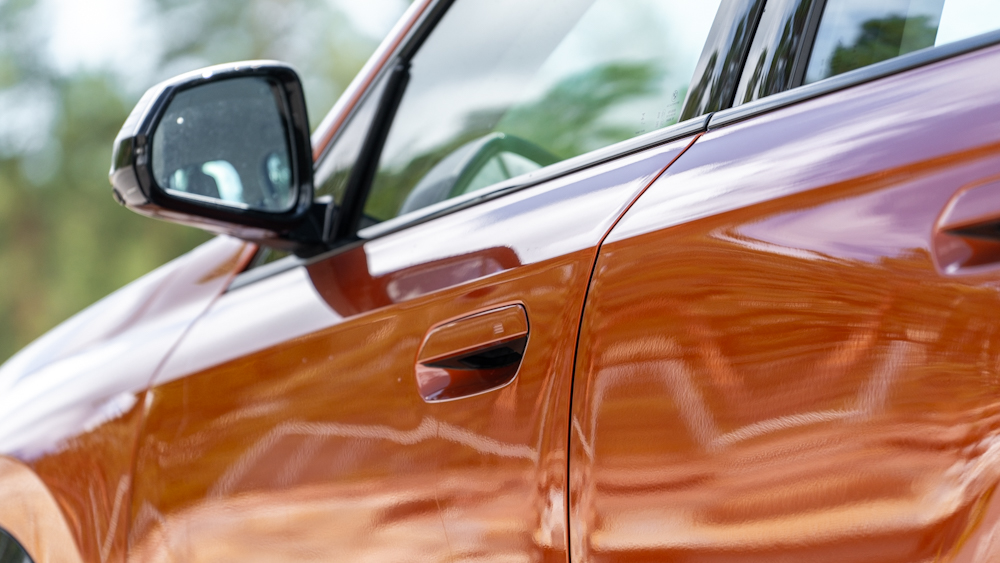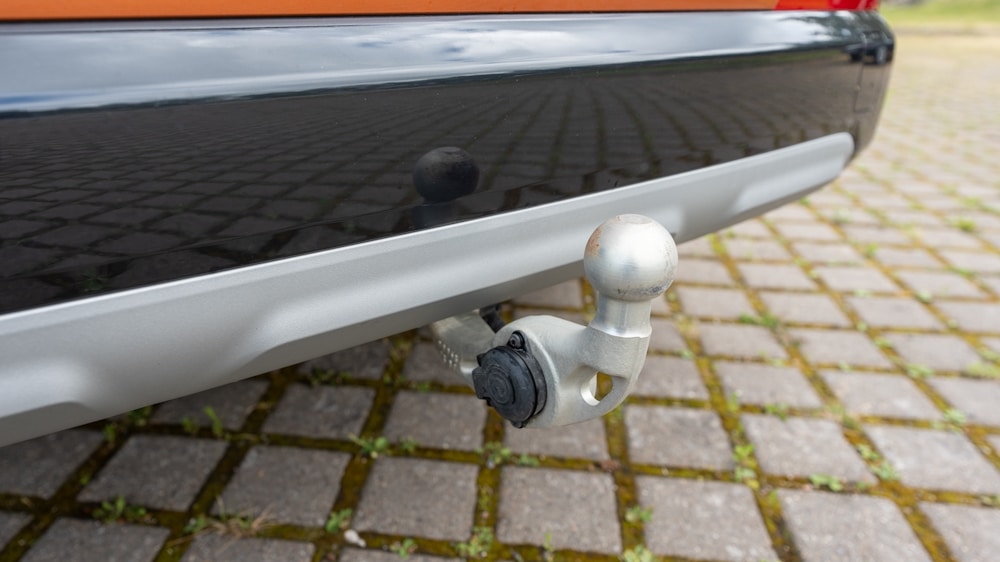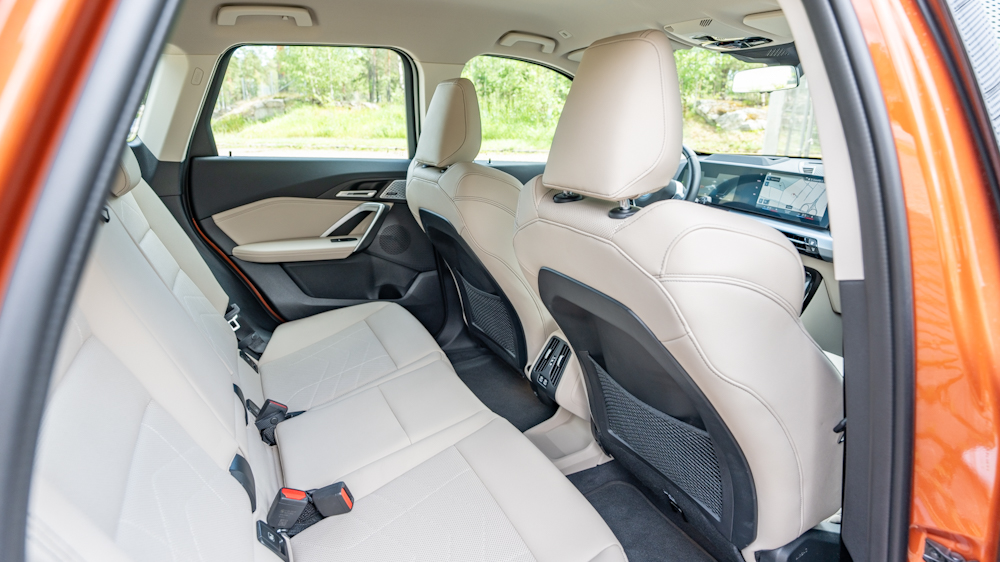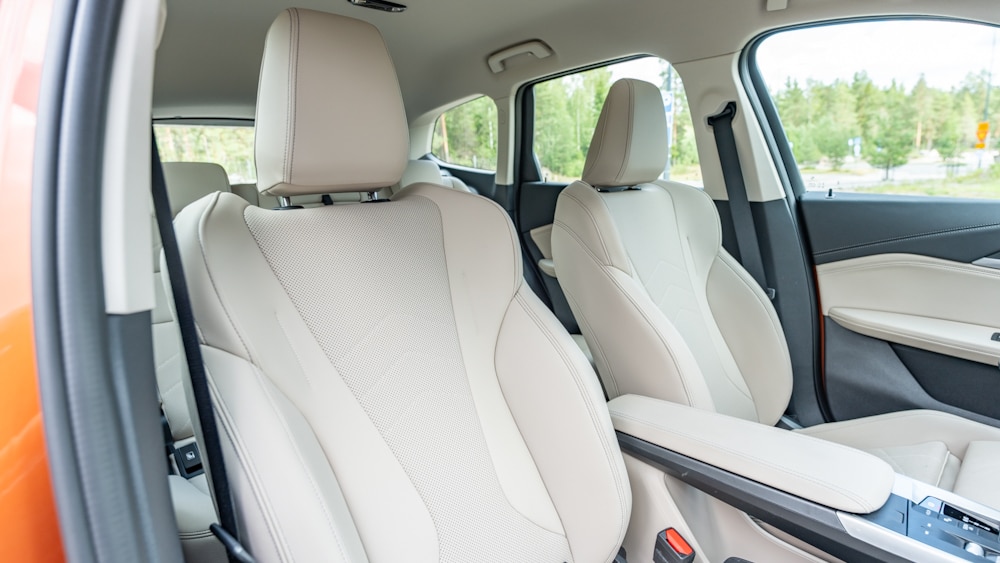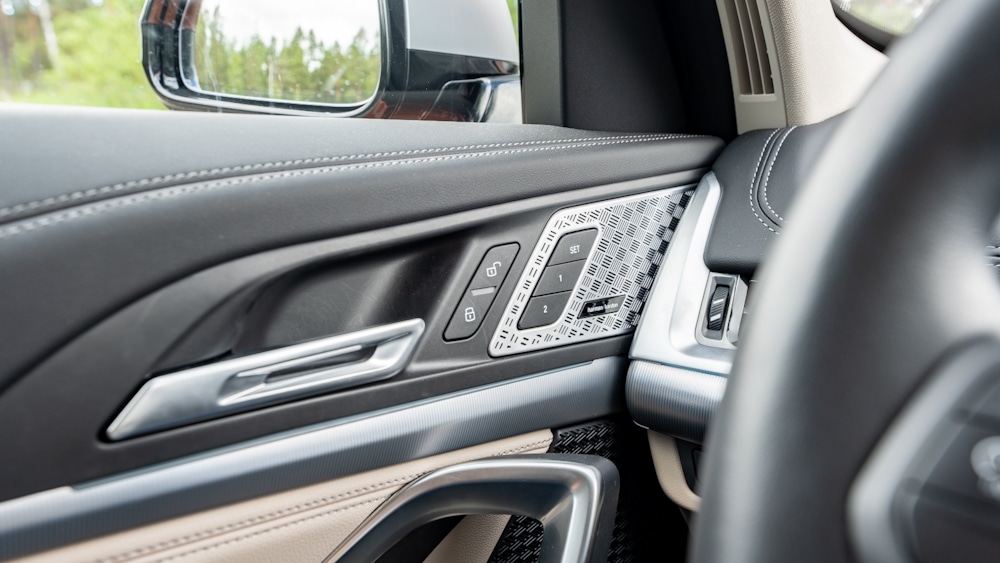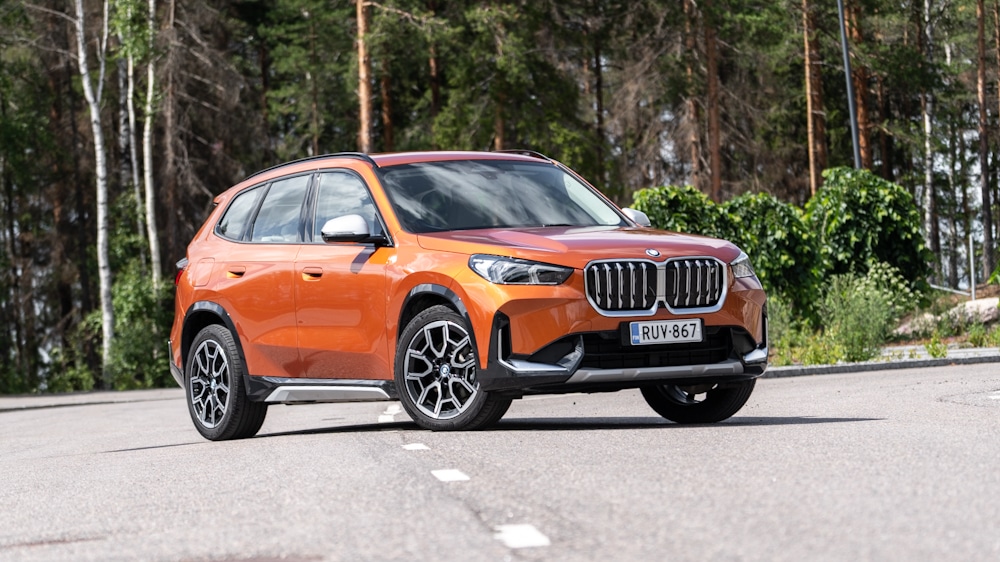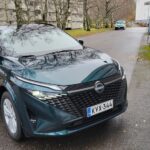New all-electric models from BMW are coming onto the market at an accelerating pace. The iX1 we tested is an interesting ‘something for everyone’ body style, as in addition to the all-electric iX1, you can choose between a charging hybrid or a petrol or diesel-only powertrain. The all-electric version is the smallest all-electric model in the current Bavarian range.
The all-electric iX1 is not a small car, despite its title as the smallest model. The compact SUV hides a larger interior than its looks and there is also plenty of room for rear passengers. And the boot space is big too – the iX1’s 490-litre boot is just 10 litres smaller than the BMW iX flagship.
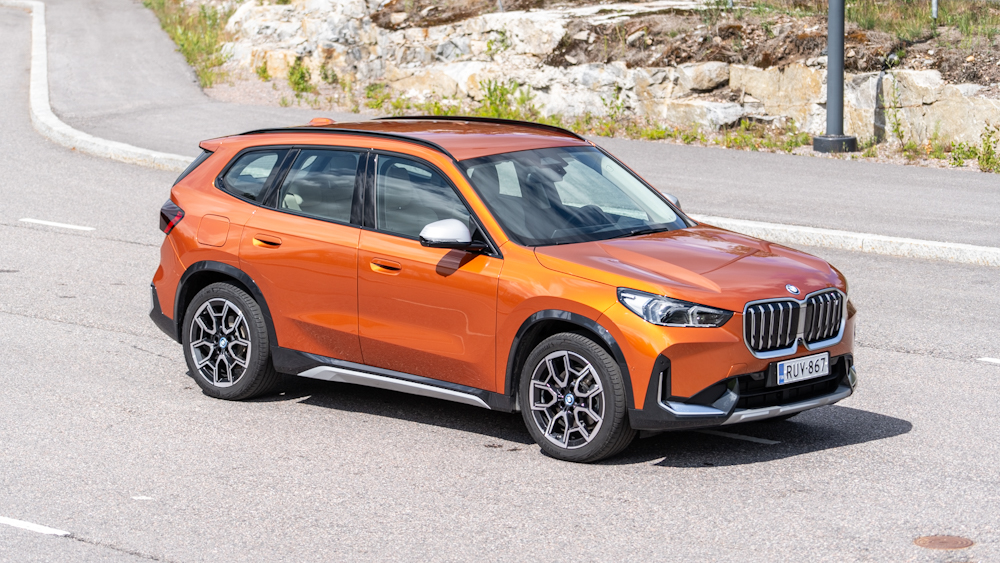
The quality of the interior cannot be ignored either. As with the brand, the materials are of high quality, and even if you forget the leather seats in the test car, the cabin has a refined feel throughout.
The ergonomics of the cabin, on the other hand, don’t quite score full marks. As is typical of the brand, the dashboard’s reciprocal screen is oriented towards the driver. On the centre console, the front of the elbow rests within easy reach of the gear selector, drive mode selector and volume control, among other things.
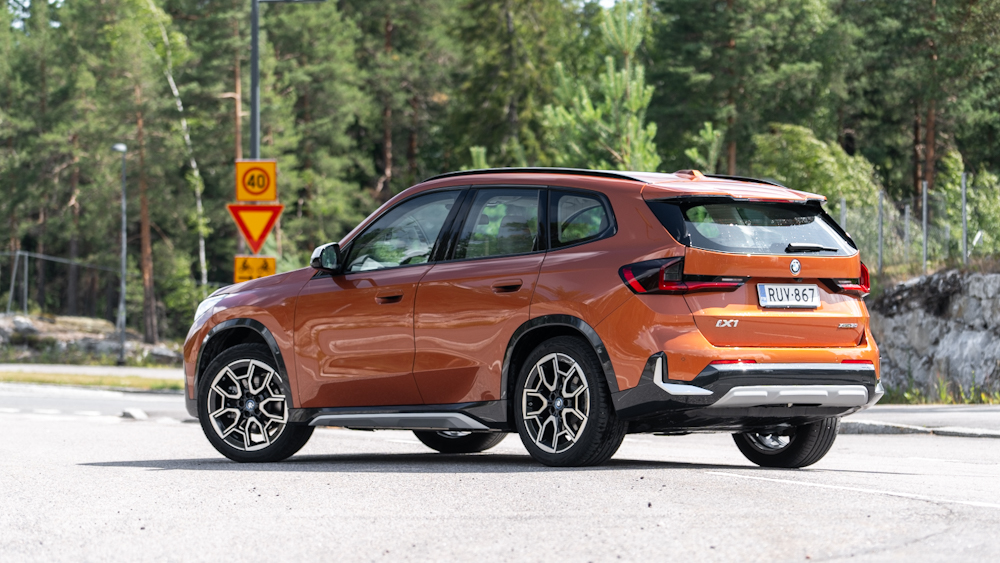
The elbow is a “floating” design, which means there is space underneath for storing items. However, the elbow is fixed, which makes it difficult to store and move goods while the elbow remains in place.
In the same ergonomic category goes the mobile phone charging cradle at the front of the centre console, which does its job as a charger, but feels awkward to locate and use.
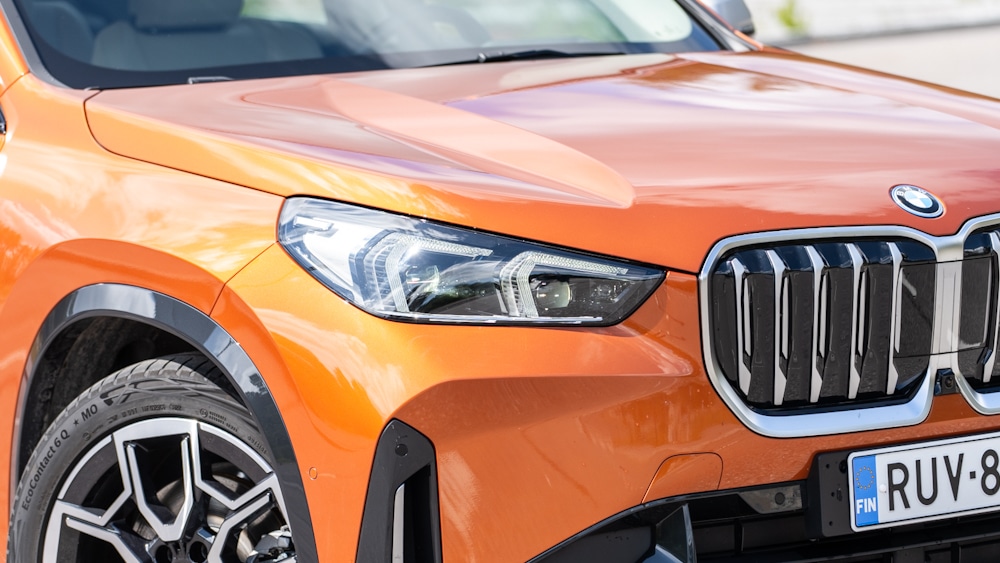
The dashboard instrument cluster and instrument cluster display is the curved design familiar from other all-electric models, with two separate displays. The screen as a whole sits elegantly in the finished cabin, and the sharp resolution makes the screens pleasant to look at. Using the menus on the touchscreen itself is often perceived as awkward, but that’s largely down to lack of familiarity.
The leather seats in the test car deserve a special mention, they are absolutely superb, suitably supportive and unrivalled in this size class. Another particularly positive observation was the noise level in the cabin at higher speeds. The noise from the large 19-inch, 245-wide tyres was largely absent, and there were no complaints about the car’s soundproofing.
Basic drivability
The test car was the four-wheel drive xDrive30 Charged Edition. Four-wheel drive is provided by electric motors mounted on both axles, with a maximum combined output of 230 kilowatts or 313 horsepower. Torque is 494 Newtons and acceleration is 5.6 seconds from zero to 60.
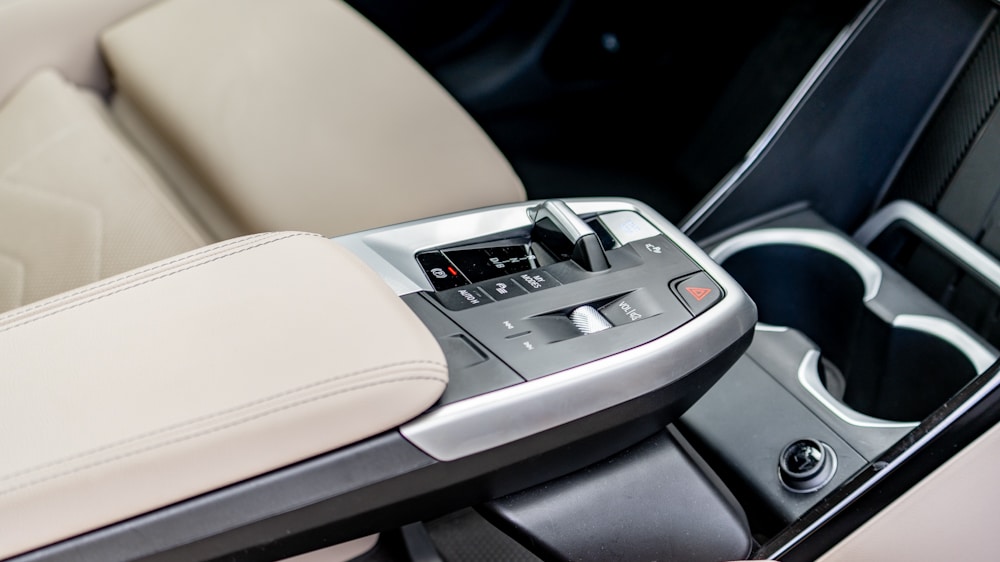
The car has at least enough power to get you going and the handling is quite balanced if you don’t let the light steering feel bother you too much. Even more noticeable than the steering feel was the firm, and in some situations even hard, feel of the chassis.
At low speeds, the sharpest bumps felt uncomfortable at worst. At motorway speeds, a slightly more refined and softer feel would be welcome.

For some reason, the best of the Bavarian brand’s expertise in chassis and ride quality hasn’t quite found its way into the iX1, but the iX1’s ride quality is nothing to be ashamed of compared to its competitors.
The gearbox is available in D and B positions, allowing for a single pedal driving style in addition to the traditional gas/brake pedal combination.
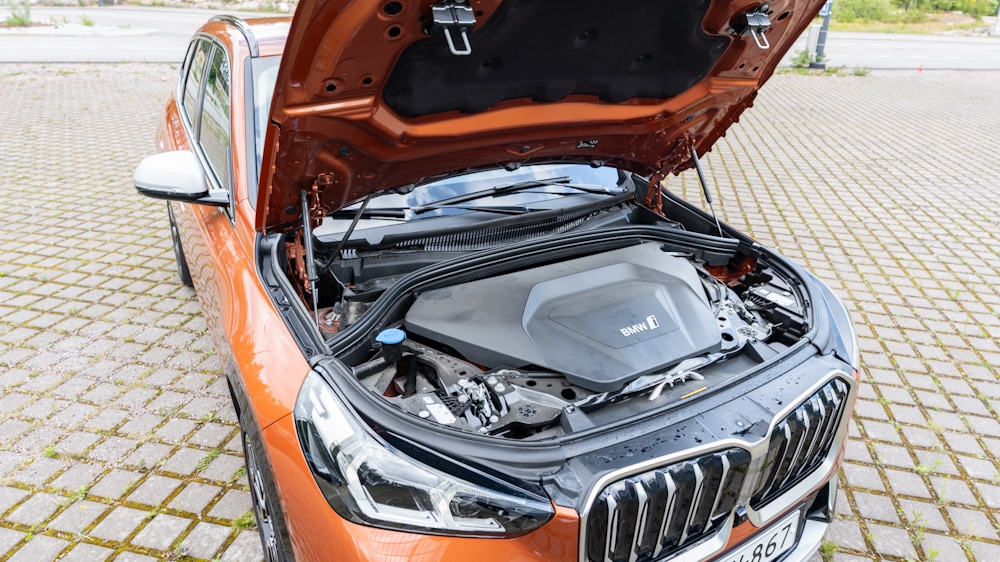
The manufacturer claims an operating range of just over 400 kilometres on a single charge and a combined consumption of 16.9-18.1 kWh/100km. Knowing that the bodywork is not designed only for an electric power train, the consumption figures for motorway speeds are particularly interesting. Externally, the iX1, with its traditional internal combustion engine design, does not appear to have perhaps the lowest drag coefficient.
During the week-long test drive, average consumption was 17.8 kWh/100km, which is well in the middle range compared to others. On the motorway at 120 km/h, average consumption was a surprisingly moderate 19.8 kWh/100km.
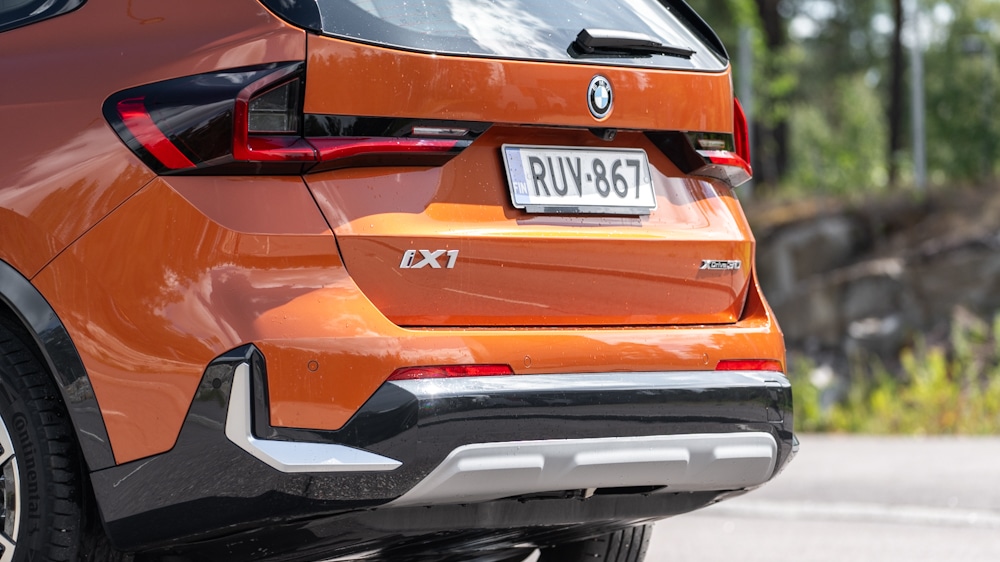
The car’s battery has a net capacity of 64.7 kWh, so in quite optimal summer temperatures of 20 degrees Celsius, the test-driven range was around 330-360 km, depending on driving speed.
An optional 22 kW internal charger is available for the iX1 to significantly improve the comfort of the electric car. This makes charging easier, especially in public places, as the AC charger can recharge the battery in just over three hours. Even most higher end all-electric cars do not have a 22 kW. charger available.
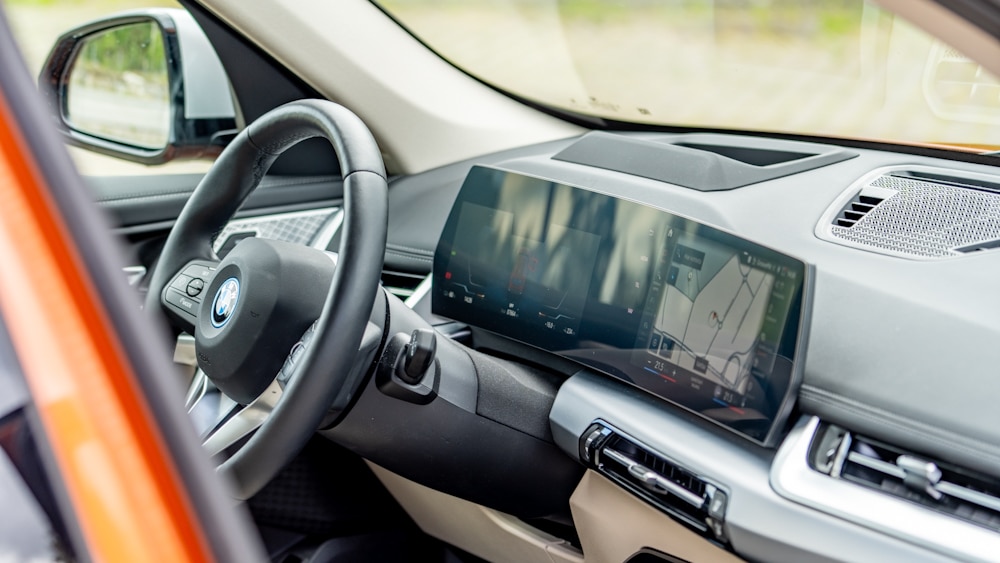
The maximum fast charging power is only 130 kW. However, the car’s excellent charging current reception capability allowed it to come close to the values stated by the manufacturer, charging from 15% to just over 90% in 39 minutes (manufacturer: 10% -> 80% in 29 min.).
Also available in front-wheel drive
the iX1 received a model update in September, with the highly anticipated iX1 eDrive20 front-wheel drive version.
However, the price list updated at the beginning of November reveals the regrettably high price of the front-wheel drive model. At its cheapest, the all-electric iX1 with front-wheel drive is available for €55 300. Prices for the four-wheel drive model start at €59 300.

As a product, the iX1 is in many respects a very good and high-quality package, offering a lot of car in this size class with good interior space. For longer journeys, you don’t have to sit at the charging station for too long thanks to the good charging curve, even if the maximum charging power isn’t quite at the top of the range.
Despite being a good product, the iX1’s sales figures are inevitably dragged down by the high price – especially when the list of accessories on several pages contains more and more essential accessories.
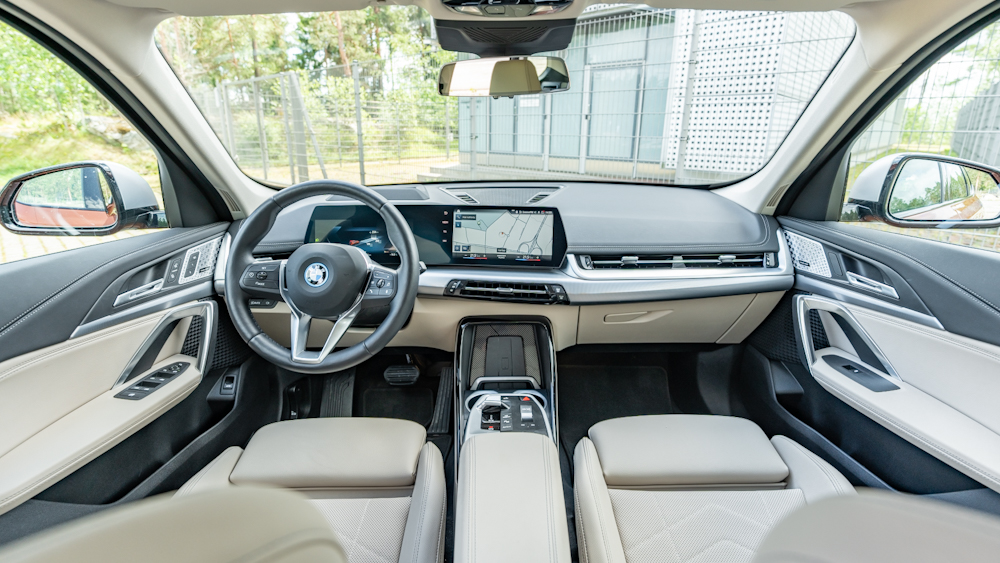
One would hope that BMW would also be able to match the aggressive pricing of recent competitors, or else the percentages in the sales statistics will remain low.
BMW iX1 xDrive30 Charged Edition
Total maximum power: 230 kW, 313 hp.
Total maximum torque: 494 Nm.
Acceleration: 5.6 seconds (0-100 km/h)
Driving battery capacity (gross): 66.5 kWh.
Driving battery capacity (net): 64.7 kWh.
Combined consumption declared by the manufacturer: 16.9-18.1 kWh/100km.
Manufacturer’s declared range (combined): 417-439 km (WLTP)
Consumption during test drive: 17-21 kWh/100km (temperature 15-22°C)
Test-driven range on a single charge: 310-380 km.
Maximum charging power (DC): 130 kW.
Maximum charging power (AC): 22 kW.
Tare weight: 2085 kg.
Cargo space: 490 l.
Traction: four-wheel drive
Starting price: 60 790 euros
